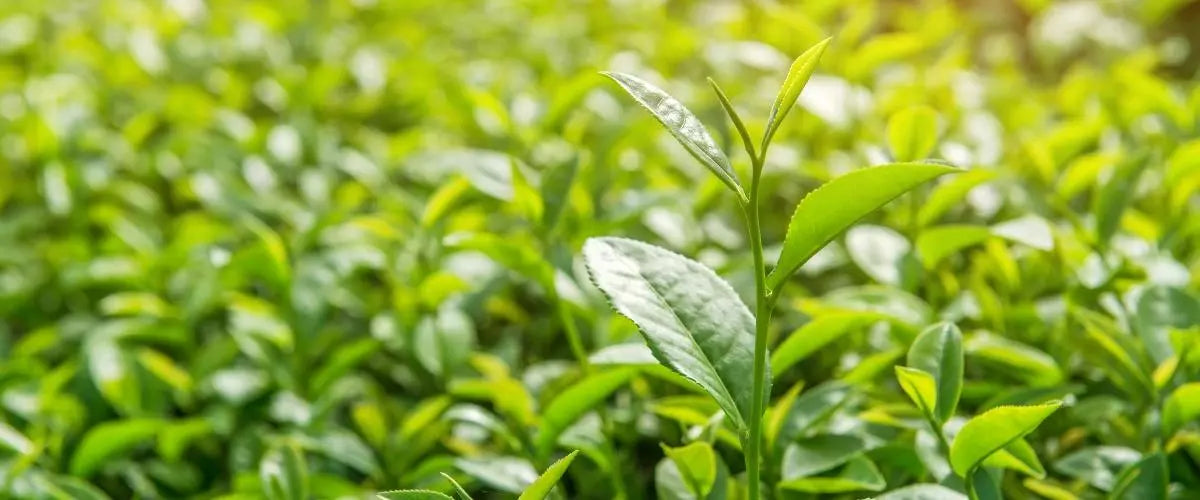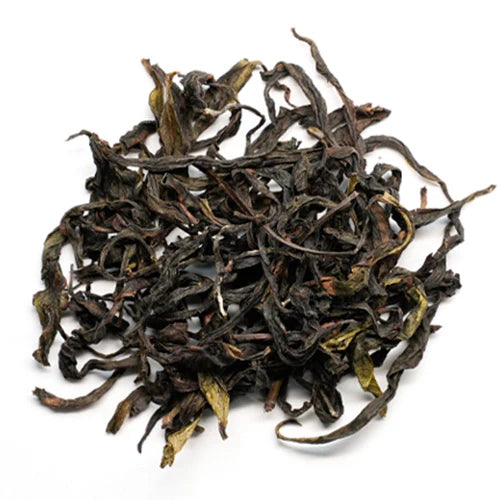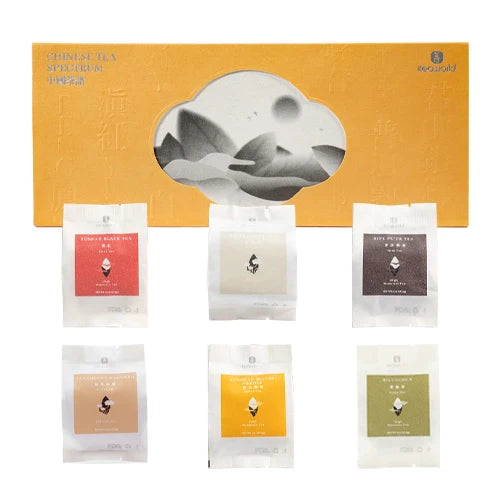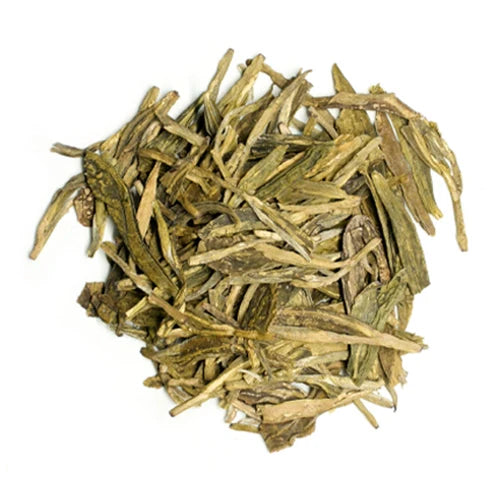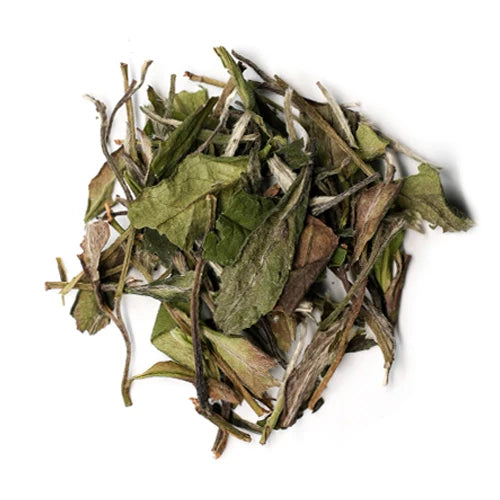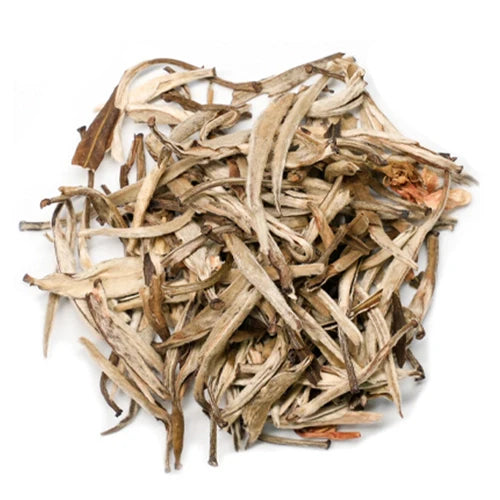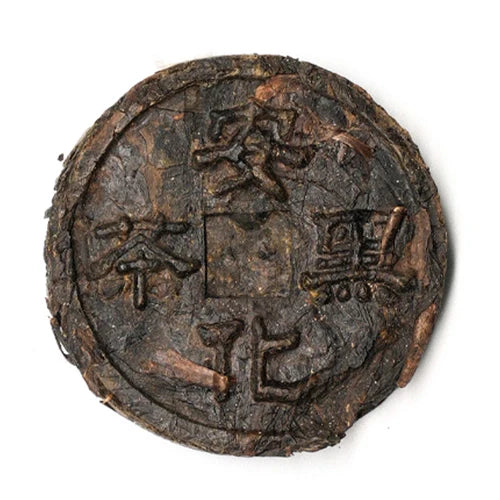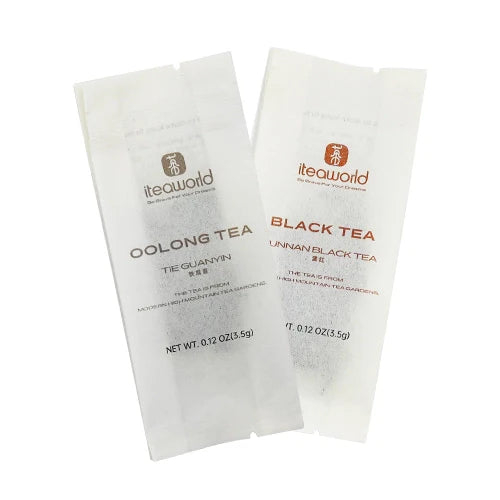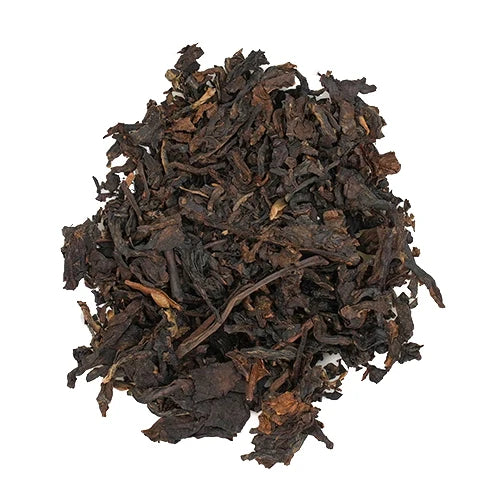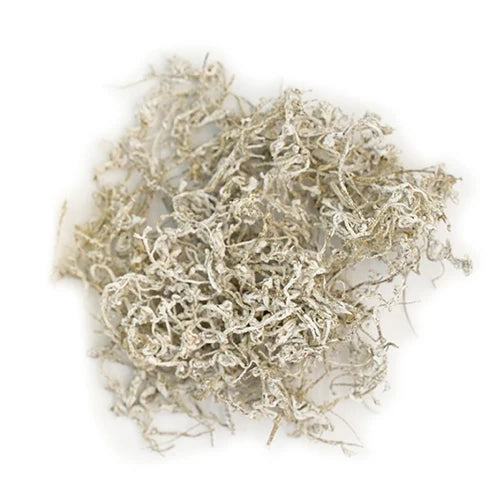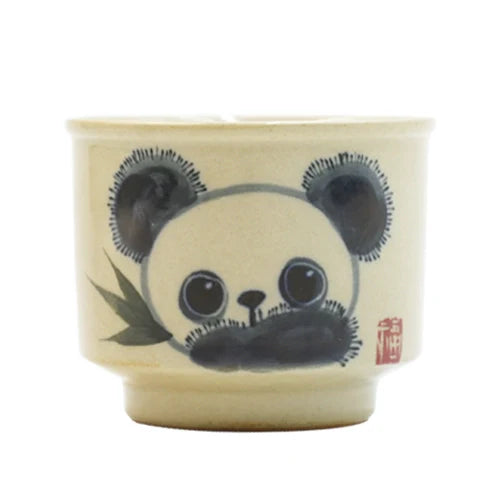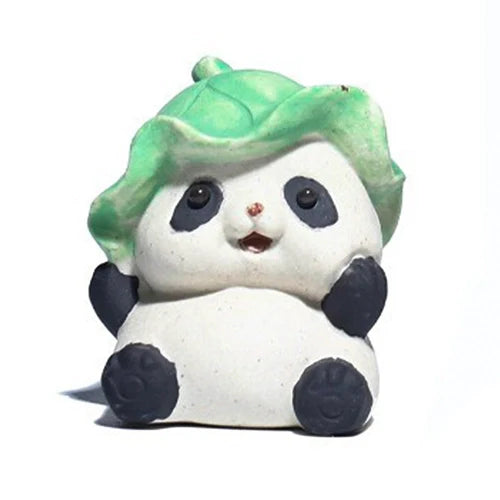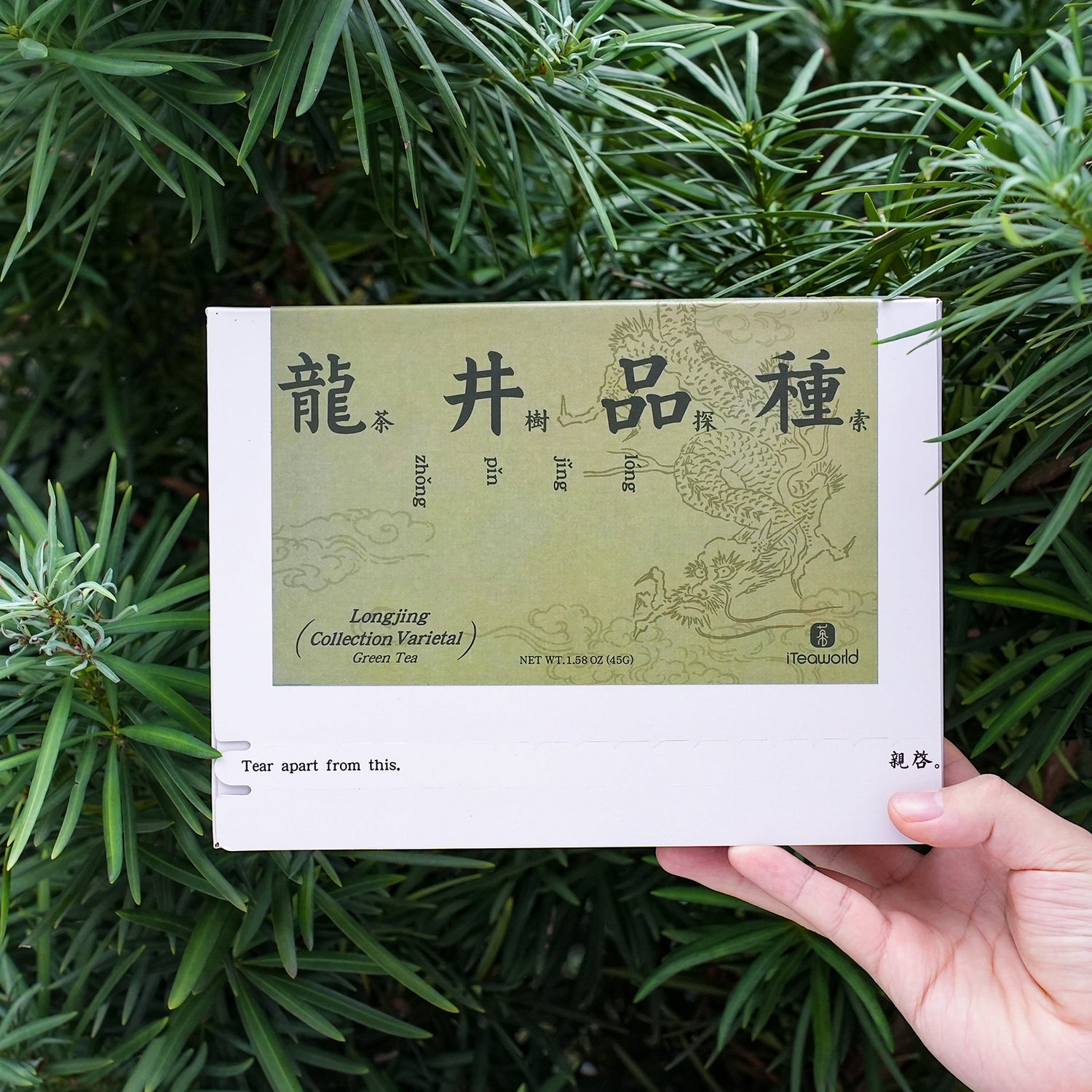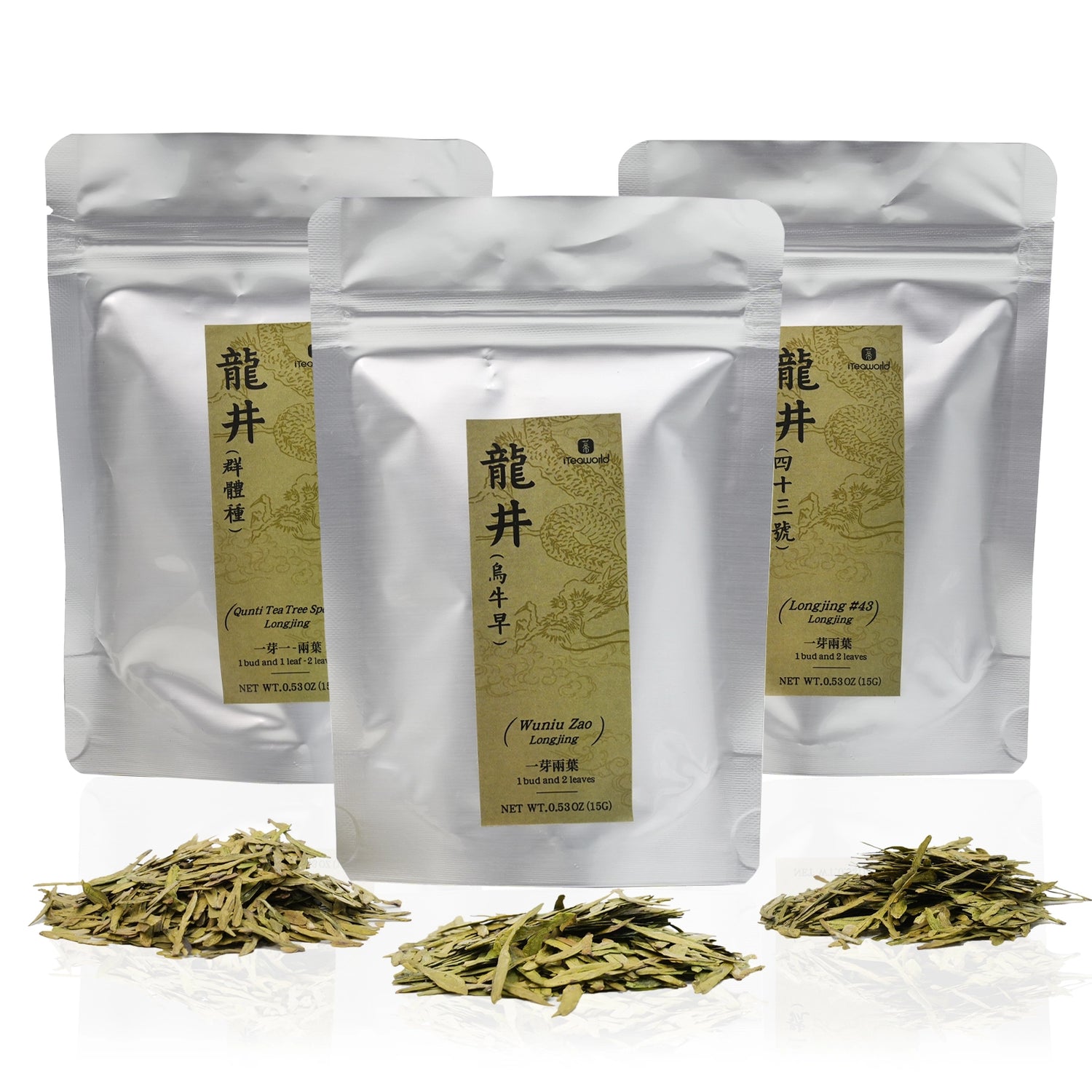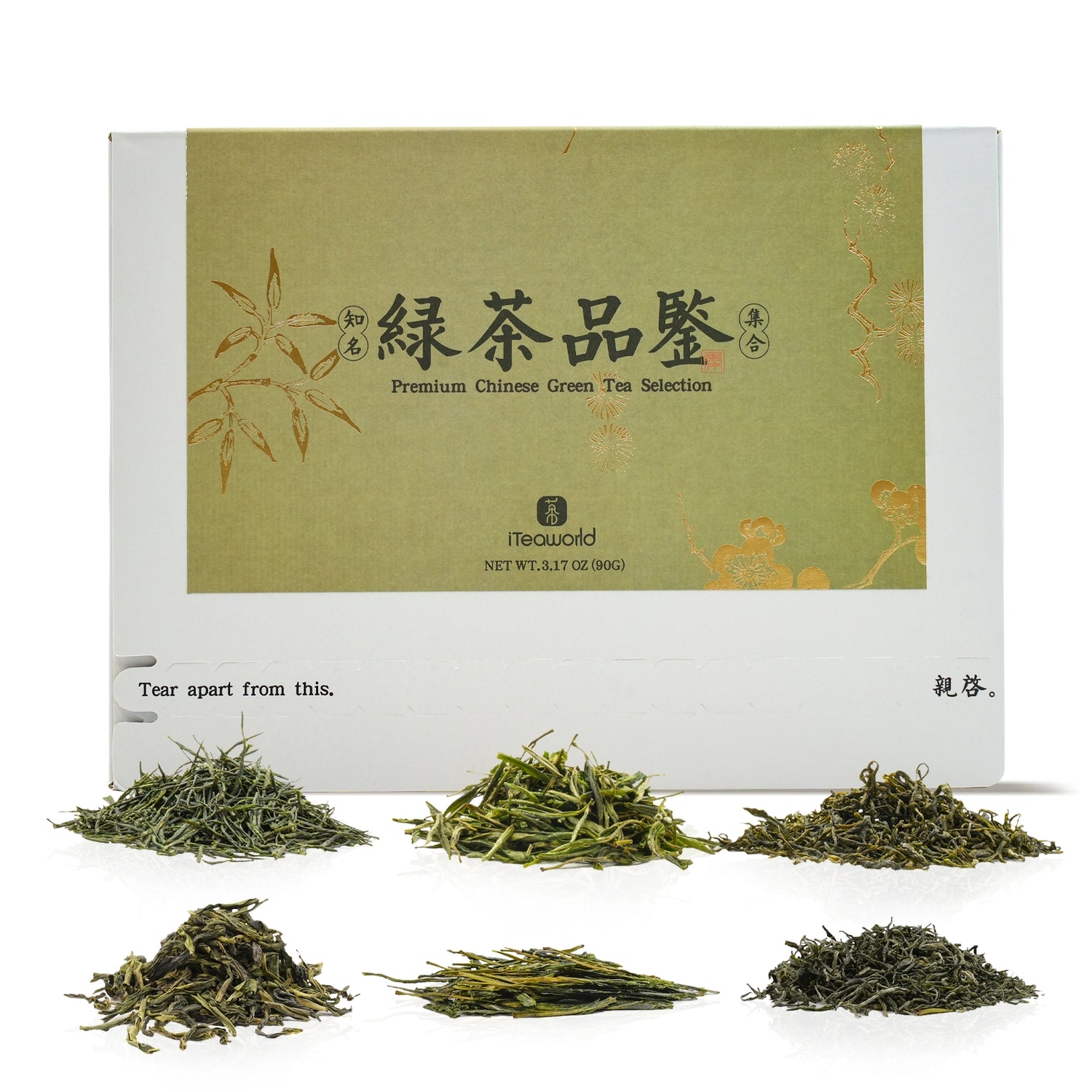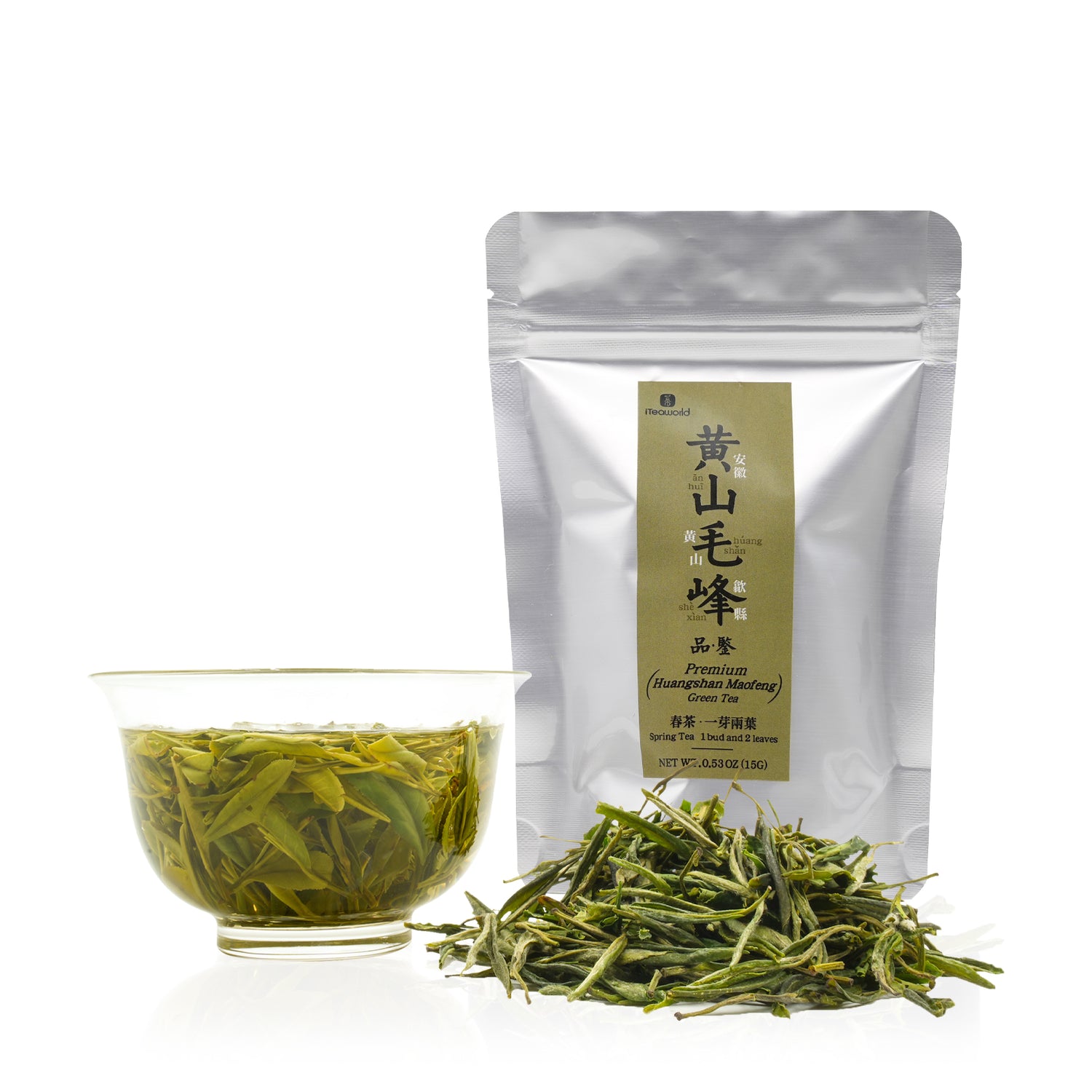Sort by:
28 of 29 products
28 of 29 products
Introduction:
This collection offers a unique opportunity to explore the subtle differences in flavor, aroma, and texture created by three distinct tea tree varietals, all using the same harvesting grade: one bud and two leaves. You’ll experience Longjing (Dragon Well) green tea made from three renowned tea tree varietals: Wu Niu Zao, Longjing #43, and the heritage Longjing Qunti. Though harvested and processed in the same way, each tea reflects its unique tree’s characteristics. This collection allows tea lovers to discover their preferred varietal of this classic green tea.
Net weight of tea: 45g, including:
Longjing Green Tea (Wuniuzao variety): 15g
Longjing Green Tea (Qunti variety): 15g
Longjing Green Tea (Longjing 43 variety): 15g
The origins of the 3 types of Longjing tea: Tianmu Mountain, Shengzhou City, Shaoxing, Zhejiang Province, China.
Key Benefits:
Explore Different Varietals: Taste the difference between three tea tree types that shape the final flavor and texture of Longjing tea.
Educational Tasting Experience: Perfect for tea enthusiasts looking to learn about how different varietals affect tea’s character.
Authentic Craftsmanship: Each tea is crafted using traditional methods to retain the unique characteristics of each varietal.
Heritage and Innovation: From the traditional Qunti varietal to the newer Longjing #43, this collection offers a blend of tradition and modern cultivation.
Recommendation Reasons:
Understand Varietal Differences: This collection is designed for those who want to explore how tea tree varietals influence the taste and mouthfeel of Longjing tea.
Same Harvesting Grade, Different Flavors: You get to compare teas made from the same harvesting standard (one bud and two leaves) but from different varietals, highlighting subtle yet meaningful differences in flavor.
Quality and Expertise: Made by experienced tea masters, this collection brings the highest quality Longjing green tea directly to your cup.
Value for Tea Enthusiasts: This curated set offers a chance to taste and compare teas that are not always easy to find in Western markets.
You may have tried various green teas, like Longjing, Zhucha, and Jasmine tea, but you're looking to explore more high-quality, reasonably priced Chinese teas. To ensure value, we've carefully selected premium teas from China's top ten famous varieties, following these key principles:
Collaborating with experienced tea masters to ensure traditional and skilled craftsmanship.
Choosing high-grade leaves—one bud and one or two leaves—while hand-picking out stems and dust to ensure purity.
Sourcing directly from tea farmers to maintain freshness and quality, cutting out the middleman.
Ensuring our selections are fresh spring teas from 2024 to capture vibrant flavors and aromas.
Picking high-quality leaves from authentic tea varietals to guarantee unique taste.
Balancing quality with affordability to meet consumer needs.
Sourcing from core production areas or nearby regions to ensure consistency in terroir.
Avoiding lower-grade flatland teas, focusing on those grown at altitudes above 600 meters to enhance flavor complexity.
Net weight: 90g, including:
Premium Biluochun: 15g
Premium Enshi Yulu: 15g
Premium Xinyang Maojian: 15g
Premium Lu'an Guapian: 15g
Premium Taiping Houkui: 15g
Premium Huangshan Maofeng: 15g
Here’s a brief overview of each tea:
Huangshan Maofeng: This tea is sourced from a renowned high mountain region, featuring tea trees over 60 years old grown in gravelly soil at 800 meters elevation. Recognized as a national intangible cultural heritage, Huangshan Maofeng boasts a distinctive aroma with floral and sweet notes, producing a clear, bright green-yellow tea that offers a pure high mountain experience.
Liu'an Guapian: This historic royal tribute tea was once reserved for the imperial family. Our premium Liu'an Guapian is hand-crafted by a master with decades of experience, sourced from high-altitude tea plants at 600 meters. The spring-harvested leaves ensure a rich fragrance and refreshing flavor, resulting in a pure, lingering aftertaste.
Taiping Houkui is a famous green tea from the Taiping area of Huangshan, Anhui Province, China. It comes from the core production region—Qiaoshan Village in Xinming Township—known for its cool, humid climate and fertile soil, perfect for growing tea. Our premium Taiping Houkui is made from one bud and three leaves, usually harvested around the Grain Rain season, with fine white fuzz on the leaves indicating top quality. The tea is grown from the traditional seed-propagated ‘Shi Da Shu’ variety, which matures later than usual. Due to the high altitude in Huangshan, the first harvest also takes place around Grain Rain. We work with Master Yu Jianguo, a tea farmer with over 20 years of experience, to produce this tea, which has a fresh flavor and aroma.
Biluochun: As one of the most iconic green teas in China, Biluochun is renowned for its unique floral and fruity aroma. Our premium Biluochun is sourced from Liyang, Jiangsu Province, crafted using traditional methods, and picked at the pre-rain period, ensuring a fresh, delicate flavor with minimal bitterness. This high-quality tea offers excellent value, priced at half to a third of similar products from core regions.
Xinyang Maojian: A top Chinese green tea, Xinyang Maojian comes from the core production area in Shihe District, Xinyang, located in high-altitude mountains at 900 meters. The significant temperature difference between day and night creates a unique elegant aroma and a fresh, flavorful taste. Our 2024 spring harvest features the highest quality leaves, with fine white hairs indicating superior quality.
Enshi Yulu: This historic steamed green tea is the only one in China that retains this traditional crafting method. Our Enshi Yulu comes from the core area in Enshi, Hubei, handpicked and crafted by a tea farmer with over 20 years of experience. Using high-grade leaves, this tea is fresh, rich, and slightly reminiscent of seaweed, while also being rich in natural selenium, known for its immune-boosting and antioxidant properties.
Recently viewed products
FAQs
The Green Tea Sampler contains Longjing, Biluochun, Huangshan Maofeng, Enshi Yulu, Jasmine Green Tea and Old Tree Green Tea.
You can easily make a cup of green tea at home with our green tea sampler!
Brewing Chinese green tea is typically done in a glass cup, and there are three main brewing methods based on the freshness of the tea leaves. For a comprehensive guide, you can read the full article. It's important to note that while each Chinese tea may have subtle differences in brewing, the methods aren't set in stone. You're free to experiment and brew to find the flavor you enjoy best. Explore the diverse world of Chinese tea and discover your perfect cup.
One of the most famous types of green tea is Longjing, also known as Dragon Well tea. Hailing from China, Longjing is celebrated for its distinctive flat, sword-shaped leaves and delicate, chestnut-like flavor. It's highly regarded among Chinese teas for its exceptional quality and rich history.
Apart from Longjing, other famous types of Chinese green tea include:
- Bi Luo Chun: Originating from Jiangsu province, Bi Luo Chun is known for its tender buds and delicate, fruity flavor profile.
- Huangshan Maofeng: Grown in the Yellow Mountain region of Anhui province, Huangshan Maofeng features slender, furry green leaves and a smooth, refreshing taste.
- Anji White Tea: Despite its name, Anji White Tea is actually a type of green tea. It's cherished for its pale green color, floral aroma, and subtle sweetness.
- Tai Ping Hou Kui: Hailing from Anhui province, Tai Ping Hou Kui is distinguished by its long, flat leaves and sweet, chestnut-like flavor notes.
These famous Chinese green teas offer a diverse range of flavors and aromas, showcasing the rich diversity of Chinese tea culture.
Discover the health benefits of Chinese green tea, a beloved beverage cherished for centuries. Packed with antioxidants and catechins, green tea may aid in metabolism, weight management, and heart health. It also offers cognitive benefits, supports dental hygiene, and provides a natural energy boost. Embrace the refreshing taste and holistic wellness benefits of green tea as part of your daily routine.
Green tea is generally considered to be slightly acidic due to its natural composition. However, the acidity level in green tea is relatively low compared to many other beverages. For individuals with sensitive stomachs, opting for a lower-acid Chinese tea variety or enjoying green tea with food can help mitigate any potential discomfort. Overall, while green tea may have some acidity, it's typically well-tolerated by most people when consumed in moderation.





